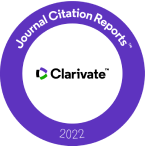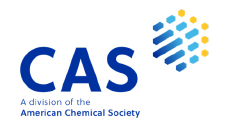Journal Volumes
Visitors
ALL : 901,491
TODAY : 1,707
ONLINE : 63
ALL : 901,491
TODAY : 1,707
ONLINE : 63
JOURNAL DETAIL
Ecteinascidin 770, A Tetrahydroisoquinoline Alkaloid, Targeting the Bacterial Cell Division Protein FtsZ
Paper Type |
Contributed Paper |
Title |
Ecteinascidin 770, A Tetrahydroisoquinoline Alkaloid, Targeting the Bacterial Cell Division Protein FtsZ |
Author |
Phennapa Charoenwiwattanakij, Jaturong Pratuangdejkul, Montree Jaturanpinyo, Witaya Lowtangkitcharoen, Khanit Suwanborirux and Veena Nukoolkarn |
Email |
veena.nuk@mahidol.ac.th |
|
Abstract: FtsZ, a crucial protein in bacterial cell division has recently become of interest as target for the discovery of new antibacterial treatments. Owing to its conservation in prokaryote and the finding that is an inhibitor of FtsZ, it is expected to be developed as a new antibacterial drug with high specificity and rare occurrence of bacterial resistance. In this study, the antibacterial activities of Ecteinascidin 770 (ET770) and its effects on bacterial FtsZ were determined using in vitro and in silico methods. ET770 is a semi-synthesized product from marine tunicate classified as tetrahydroisoquinoline alkaloid. ET770 was proven as potential antibacterial agent against S. aureus, B. subtilis, MRSA and E. coli with an MIC of 2.02, 1.01, 2.02, and 32.43 mM, respectively. The effects of ET770 on bacterial cell division was investigated using E. coli str. K-12 substr. JW0093. Treating E. coli JW0093 with 0.1 mM of ET770 mostly induced filamentous forming and elongation of cell morphology. Whereas untreated E. coli JW0093 had a typical short rod and was a single-celled bacteria. Moreover, ET770 showed remarkable inhibition of GTPase-like activity of FtsZ with an IC50 of 0.96 nM. The decrease of FtsZ polymerization ratio was observed using a dynamic light scattering technique when 10, 50 and 100 mM of ET770 were added to purified FtsZ. The binding of ET770 in the nucleotide binding pocket of the homology model of E. coli-FtsZ was predicted using flexible docking and its binding mode was analyzed. The overall results concluded that ET770 might be developed into a novel antibacterial drug through the inhibition of bacterial FtsZ. |
|
Start & End Page |
2566 - 2580 |
Received Date |
2018-06-08 |
Revised Date |
|
Accepted Date |
2018-08-23 |
Full Text |
Download |
Keyword |
antibacterial, cell division, ecteinascidin 770, ET770, FtsZ, marine sponge |
Volume |
Vol.45 NO.7 (November 2018) |
DOI |
|
SDGs |
|
| View:634 Download:211 | |
Copyrights © Since 2021 All Rights Reserved by Chiang Mai Journal of Science






